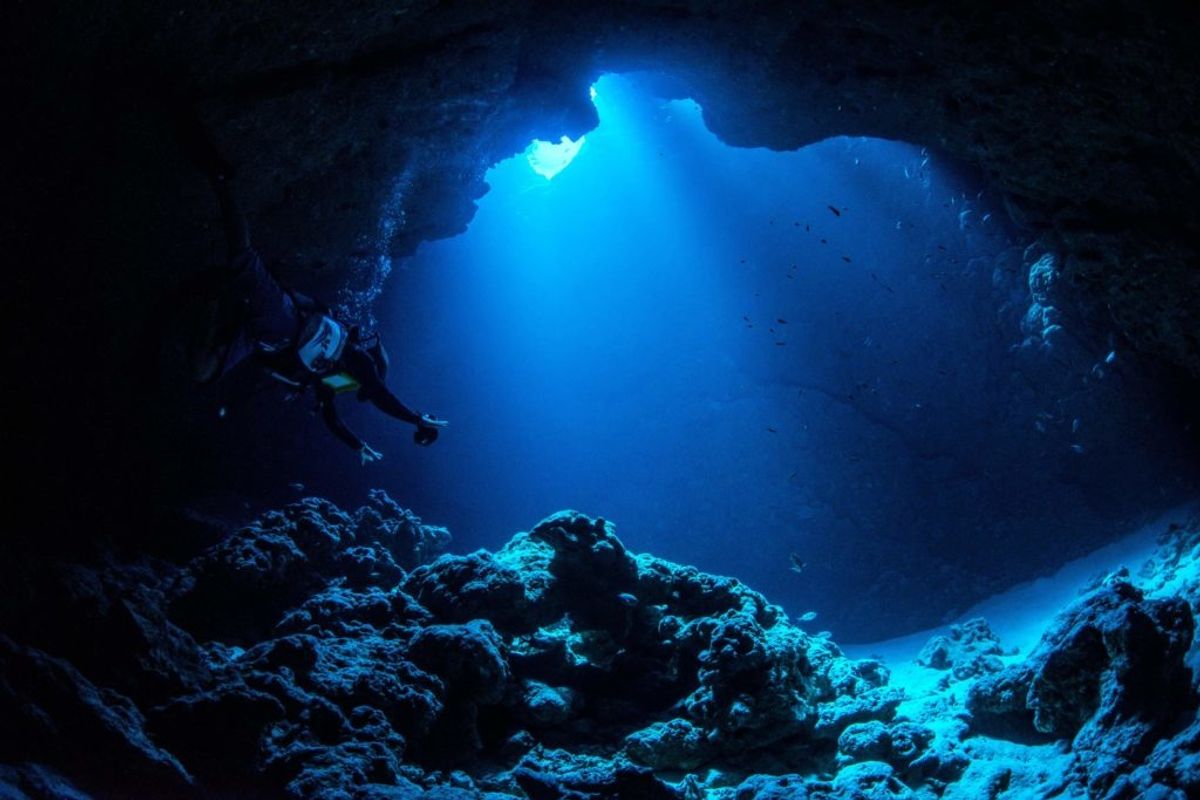
Fish carcasses sinking to the deepest parts of the ocean carry toxic mercury pollution that ends up contaminating bottom-dwelling sea creatures, according to a new study.
The study, published today in the Proceedings of the National Academy of Sciences journal,
provides evidence that the pollution from coal-fired power plants, mining, and other heavy industry is infiltrating and impacting the most remote ecosystems on the planet.
“Mercury that we believe had once been in the stratosphere is now in the deepest trench on Earth,” said lead author and University of Michigan professor and environmental geochemist Joel Blum, in a statement. “It was widely thought that anthropogenic mercury was mainly restricted to the upper 1,000 meters of the oceans, but we found that while some of the mercury in these deep-sea trenches has a natural origin, it is likely that most of it comes from human activity.”
Blum and colleagues even found evidence of methylmercury—the toxic form of mercury formed after microorganisms convert the compound—in snailfish and crustaceans called amphipods at 33,630 feet down in the Mariana Trench in the northwest Pacific Ocean.
“We studied the trench biota because they live in the deepest and most remote place on Earth, and we expected the mercury there to be almost exclusively of geologic origin—that is, from deep-sea volcanic sources,” Blum said. “Our most surprising finding was that we found mercury in organisms from deep-sea trenches that shows evidence for originating in the sunlit surface zone of the ocean.”
They collected snailfish and crustacean samples from the Mariana Trench and the Kermadec Trench—in the southwest Pacific Ocean—and analyzed them for signatures of methylmercury. They then matched the chemical signatures to a range of different fish species that live in the central Pacific and feed at depths up to 1,640 feet.
A previous study by Chinese researchers measured the mercury in sinking detritus in the ocean—however, Blum’s team found the detritus mercury signature didn’t match that of the trench organisms.
They concluded, rather, the trench organisms were contaminated from sinking fish carcasses.
As coal is phased out, mercury emissions have dropped in recent years in North America, however, China and India continue to rely heavily on coal plants. Mercury travels the globe, eventually deposited on land or water where microorganisms convert it to toxic methylmercury, which is known to harm human and animal nervous systems, hearts, immune systems, and brains. The toxic moves up the food chain as smaller contaminated animals are eaten by larger ones, leaving humans who eat a lot of fish at risk of mercury pollution.
It’s not entirely clear how methylmercury may be affecting creatures in the deepest ocean trenches.
“The trenches are some of the least studied ecosystems on Earth, and the Mariana snailfish was only just discovered in 2014,” said study co-author and University of Hawaii oceanographer Jeff Drazen, in a statement.
However, Drazen said, this is just the latest evidence that humans are polluting the most hard-to -reach corners of the planet.
“Deep-sea trenches have been viewed as pristine ecosystems unsullied by human activities. But recent studies have found traces of anthropogenic lead, carbon-14 from nuclear weapons testing, and persistent organic pollutants such as PCBs in organisms living in even the deepest part of the ocean,” Drazen said.
Banner photo: Mariana Trench. (Credit: Wikimedia Commons)




